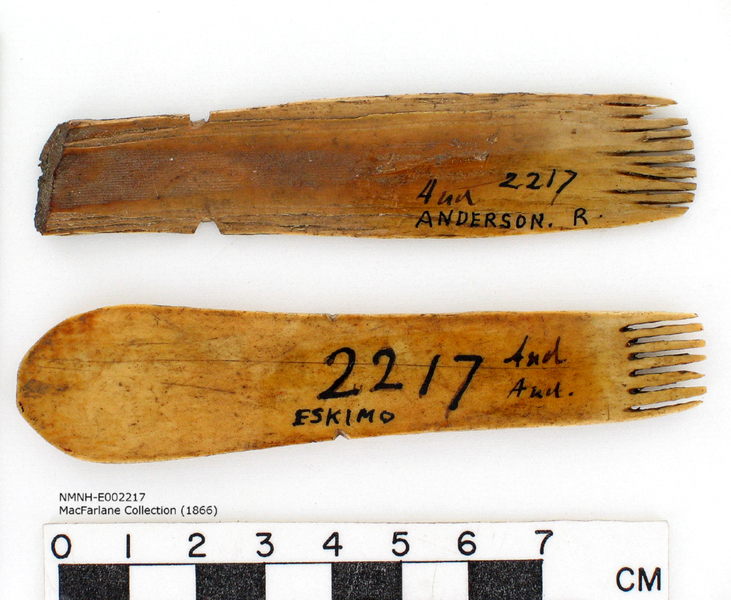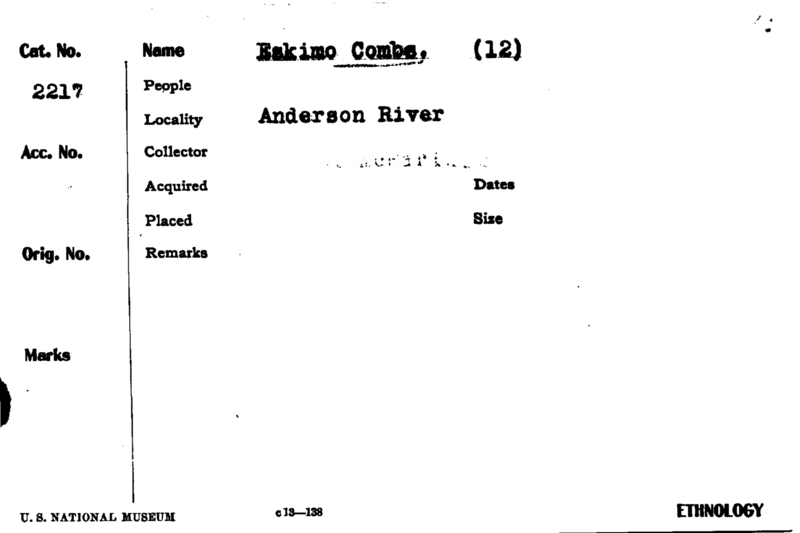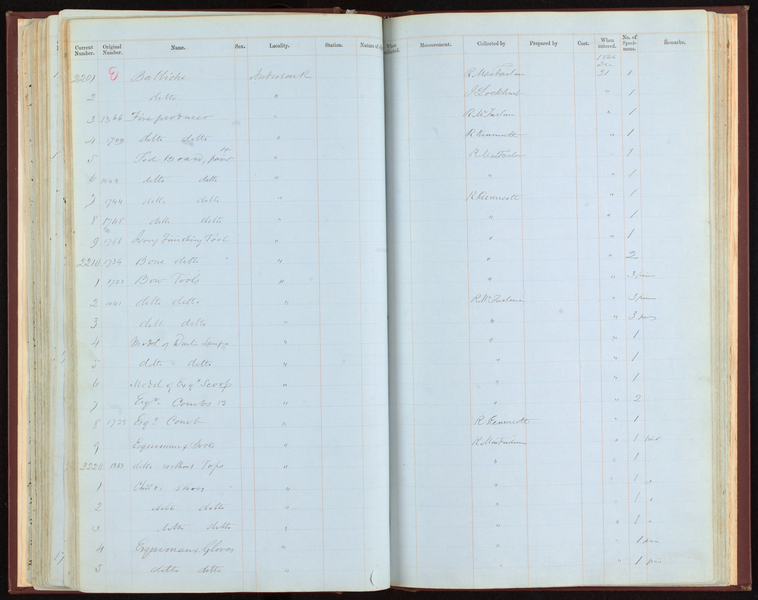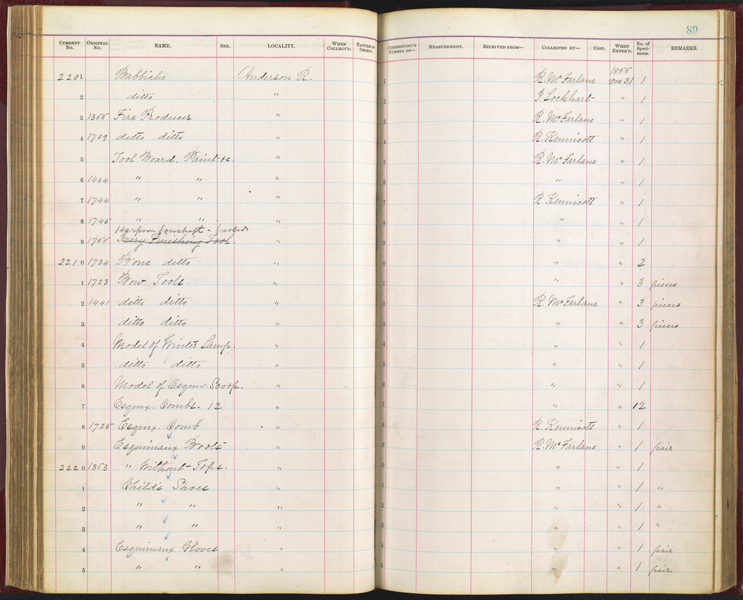Combs Item Number: E2217-0 from the National Museum of Natural History





Notes
For comb # 1 of 2 (called A in website): Source of the information below: Inuvialuit Pitqusiit Inuuniarutait: Inuvialuit Living History, The MacFarlane Collection website, by the Inuvialuit Cultural Resource Centre (ICRC), Inuvik, N.W.T., Canada (website credits here http://www.inuvialuitlivinghistory.ca/posts/12 ), entry on this artifact http://www.inuvialuitlivinghistory.ca/items/89 , retrieved 1-3-2020: Comb made from ivory. The teeth were produced by making a series of small cuts at one end, probably using a saw judging from the nature of the cuts. Two notches on opposite edges of the handle likely were used for attaching a thong so that the comb could be attached to a belt. For comb # 2 of 2 (called B in website): http://www.inuvialuitlivinghistory.ca/items/291 , retrieved 1-3-2020: Comb made from ivory. The teeth were produced by making a series of small cuts at one end, probably using a saw judging from the nature of the cuts. Two shallow notches on opposite edges of the handle likely were used for attaching a thong so that the comb could be attached to a belt. More information here: http://www.inuvialuitlivinghistory.ca/item_types/17: Small combs with fine teeth were used for personal grooming, as well as for combing sewn fur items.
Item History
- Made in Northwest Territories, Canada
- Collected in Northwest Territories, Canada
- Received from Roderick R. MacFarlane on December 21, 1866
What
- Name
- Combs
- Identification Number
- E2217-0
- Type of Item
- comb
Who
- Culture
- Eskimo, Inuit and Inuvialuk
- Received from
- Roderick R. MacFarlane
Where
- Holding Institution
- National Museum of Natural History
- Made in
- Northwest Territories, Canada
- Collected in
- Northwest Territories, Canada
When
- Acquisition Date
- on December 21, 1866
Other
- Accession Number
- 66A00090